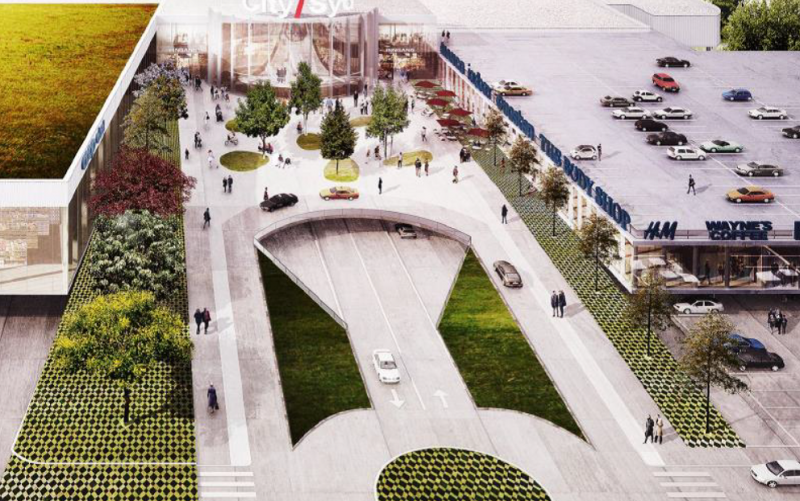Energy savings in shopping centres

Shopping centres are major energy consumers with significant opportunities for savings. Researchers are currently checking the impact of savings made on lighting and air-conditioning at the City Syd centre in Trondheim.
We are spending more and more time in shopping centres, and now that autumn is here, heated centres with sofas, cafes, entertainment and spacious parking places become very tempting. But heating, air quality and, not least, adequate lighting for their customers all cost money. The average energy consumption for such centres is about 300 kWh per square metre, and they generate high levels of CO2 emissions and waste.
The EU project CommONEnergy aims to develop practical support tools and systems to transform shopping centres into energy-efficient architectural complexes. The opportunities for making savings are far greater than for small shops. Results from demonstration buildings in Norway, Spain and Italy have encouraged researchers who are now in the process of finding out whether tailored lighting, air-conditioning and new facade systems, energy management and other factors can make energy consumption more efficient and reduce the levels of CO2 emissions from shopping centres.
More daylight
When it was opened in 1987, the City Syd shopping centre covered a total area of 28,500 m2. Today, it has expanded to 38,000 m2, including a thousand outdoor parking spaces, and continues to be one of the largest centres of its kind in Norway.
Centre Manager Finn Dybdalen says that energy consumption at City Syd is concentrated in two main areas. "The first is heating and cooling of interior air, and the second is lighting", he says. "Many centres are built with atrium roof windows that flood the central areas with daylight, but the shops themselves are located in the shadows. A lot more lighting has to be installed here to let the eye adjust", says Dybdalen.
Researchers at SINTEF have investigated and analysed different areas around the centre and have found that there are large variations in energy use. "We're in the process of redesigning the lighting system by installing smart skylights with advanced daylighting systems, LED lighting and spotlights. We're also working together with the outlet Jens Hoff Garn & Ide where we are currently installing "sun pipe" tubes that allow more daylight in", says Senior Research Scientist Matthias Haase at SINTEF.
"It's important that lighting levels aren't too strong", he says. "For example, clothing and foodstuffs should not be exposed to direct sunlight. This is why we're replacing lighting in one part of the communal area with a new system where light intensity and colour can be regulated throughout the day. The aim is to reduce the installed power emitted by the entire lighting system to 6.4W per square metre.
Exterior air instead of cooling
Air conditioning is the other major area where savings can be made in shopping centres. Researchers at SINTEF wanted to make more use of natural air currents flowing through the building. This has entailed guiding the air flow upwards towards ceiling vents and to exterior doors, and then regulating its temperature based on conditions outside.
"The aim is to run the air conditioning system at low levels and use exterior air instead of actively cooling the interior air", says Dybdalen, adding that installation has already been completed. Future plans include using a 15 kW advanced ground source heat pump (GSHP) employing a borehole for seasonal storage. Soil conditions have been investigated, and the system will be very efficient.
Savings
"City Syd has been our demo site, and experiments have been carried out in parts of the building", says Haase. "We're acquiring measurements and data as part of a research project, and when all the EU project information has been gathered we'll have some idea of what future savings can be made", he says. "Our target is to reduce energy consumption at City Syd by 75 per cent.
Finn Dybdalen didn't hesitate when SINTEF invited him to take part in the project and is confident in the changes that have been made. "The insurance company Storebrand is one of our stakeholders and they work intensively with sustainability issues, so it was natural for us to get involved", he says. The project will continue until September 2017.
Provided by SINTEF

















